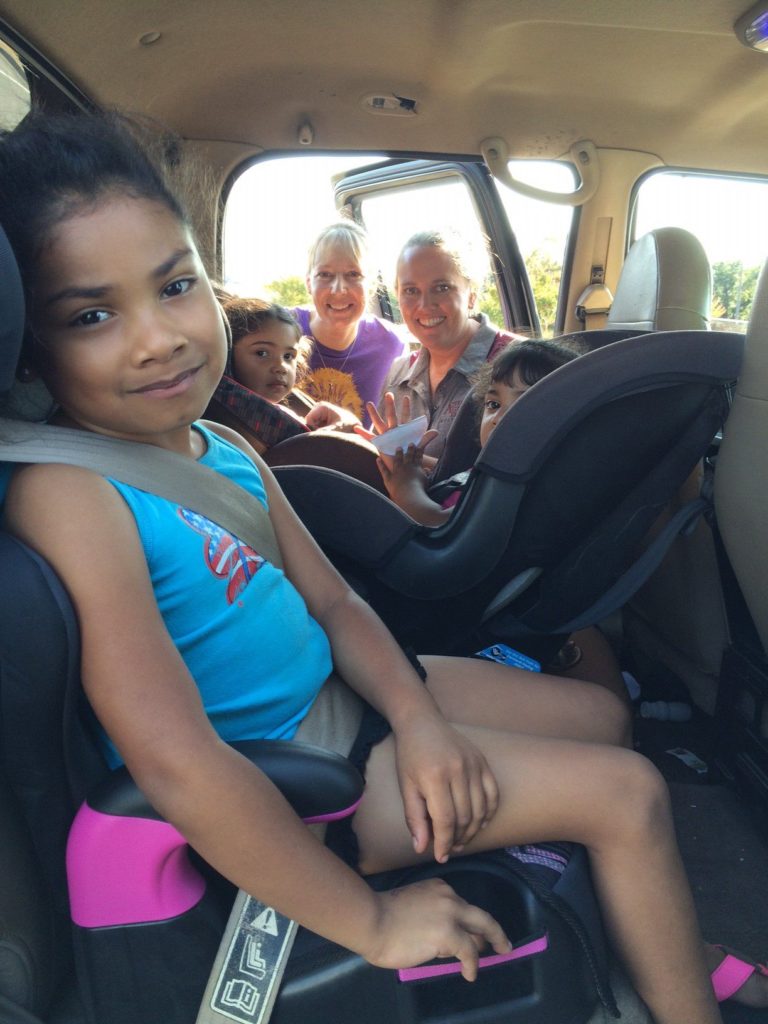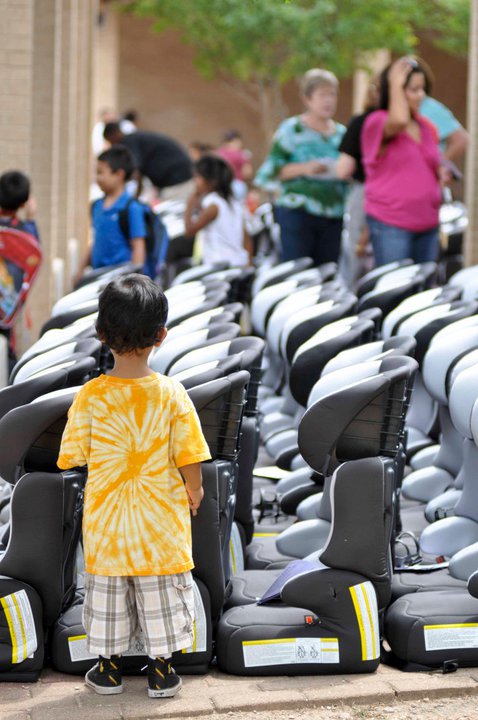AgriLife Extension project focuses on child passenger safety
Passenger Safety Project helps reduce injury, death from vehicle collisions
Thanks to program funding by the Texas Department of Transportation, TxDOT, the Passenger Safety Project of the Texas A&M AgriLife Extension Service has reduced deaths and injuries due to motor vehicle crashes.
The Passenger Safety Project

TxDOT has been funding the Passenger Safety Project since 1988, said Bev Kellner, AgriLife Extension program manager in the agency’s Family and Community Health Unit. In 1999, the project began to focus on child passenger safety through its car seat program.
TxDOT’s partnership with AgriLife Extension helps to deliver important life-saving traffic safety messages to the entire state through the agency’s county agents. And Texas A&M AgriLife has injury prevention as an important part of its overall health initiative, Kellner said.
“This year, the Passenger Safety Project is adding education on seat belt use and distracted driving in addition to child passenger safety,” she said.
A case for child passenger safety
The proper use of child safety seats reduces the risk of injury and death, leading to reduced medical costs, avoidance of lost future earnings and improved quality of life, Kellner said.

“Traffic crashes are one of the leading causes of death for children under age 14, with an estimated $214 million total annual cost related to motor vehicle occupant-related deaths and injuries. Last year, 126 Texas children under the age of 14 were killed and 21,090 were injured in motor vehicle crashes.”
Kellner said the Passenger Safety Project, which is funded through competitively awarded federal funds, conducts National Child Passenger Safety Technician Certification Training to certify technicians to assist parents with child safety seat education.
“Through this project, trained technicians deliver educational programs on child passenger safety in their community and educate parents one-on-one about the correct installation and usage of their child safety seat,” she said. “In 2018, fewer than 28% of children nationwide were properly restrained.”
A fitting example
Cari Cesaro-Hoffman, a new mother who learned the correct way to restrain her daughter in a child safety seat at one of the project’s car seat fittings, was one of the thousands of Texans who have benefitted from this safety initiative.
Cesaro-Hoffman attended a safety seat inspection at the police station on the Texas A&M campus. Kristi Hosea, the officer who helped her with the inspection, had received her safety seat inspection training though the Passenger Safety Project.
“Officer Hosea spent more than two hours going through the specific details of how to properly install a child’s safety seat,” Cesaro-Hoffman explained. “She showed me a number of areas where I wasn’t properly installing the safety seat and told me about other possible dangers.”
A month after the class, Cesaro-Hoffman’s car was hit by another vehicle as her daughter Caroline, then only 2 months old, sat secured in her child safety seat.
“Caroline was restrained in the back seat of our SUV when we were hit broadside on the driver’s side by another vehicle,” she said. “The other vehicle caused serious damage to the driver’s side and front of the SUV and pushed us onto an embankment near a set of railroad tracks.”
Because Caroline was properly restrained in the back with her car seat, she came out of the accident without a scratch.
“It was remarkable,” Cesaro-Hoffman said. “What I’d tell anyone about to get a child safety seat is to find out where they’re having a fitting or inspection and take the time to go through it. There’s no price you can put on your child’s life, and you’ll be a better parent for making sure your child is properly protected.”
Law enforcement training
As a large part of that effort, the project conducts Operation Kids Training for law enforcement, said Mike Guidry, AgriLife Extension program coordinator and certified child passenger safety instructor. The course is designed to help law enforcement officers recognize common car seat misuse and direct caregivers to local resources where they can get help with their car seats.
“We provide a Texas Commission on Law Enforcement accredited four-hour course,” Guidry said. “It covers Texas laws on car seats and seatbelts, the most common car seat misuses and mistakes and how to spot them, types of car seats and how to recognize them, and the appropriate seat for children based on their age, height, weight and developmental stage. The course uses a combination of video and hands-on learning.”
Kellner said last year 55 child passenger safety technicians were certified. To date, 1,106 safety technicians, including AgriLife Extension agents and law enforcement personnel, have been certified through the project. In 2019, the project also facilitated more than 2,000 child safety seat inspections and distributed more than 1,400 child safety seats to Texans in need.
Helping low-income, other Texas families

Kellner said the program is designed to reach all the public, but aspects are tailored to make sure low-income Texans have access to child safety seats.
“The lack of access to affordable child safety seats contributes to a lower usage rate among low-income families,” she said. “Although the project reaches a variety of audiences across the state, most of the clientele are low-income and/or minority families. When needed, a replacement seat is issued at no charge to parents or caregivers at child safety seat checkup events and at fitting station appointments.”
Kellner said the Passenger Safety Project brings a much needed and measurable benefit to Texans.
“Child safety seats are 71% effective in reducing fatal injury for infants and 54% effective for toddlers,” Kellner said.
For more information, go to https://passengersafety.tamu.edu.


